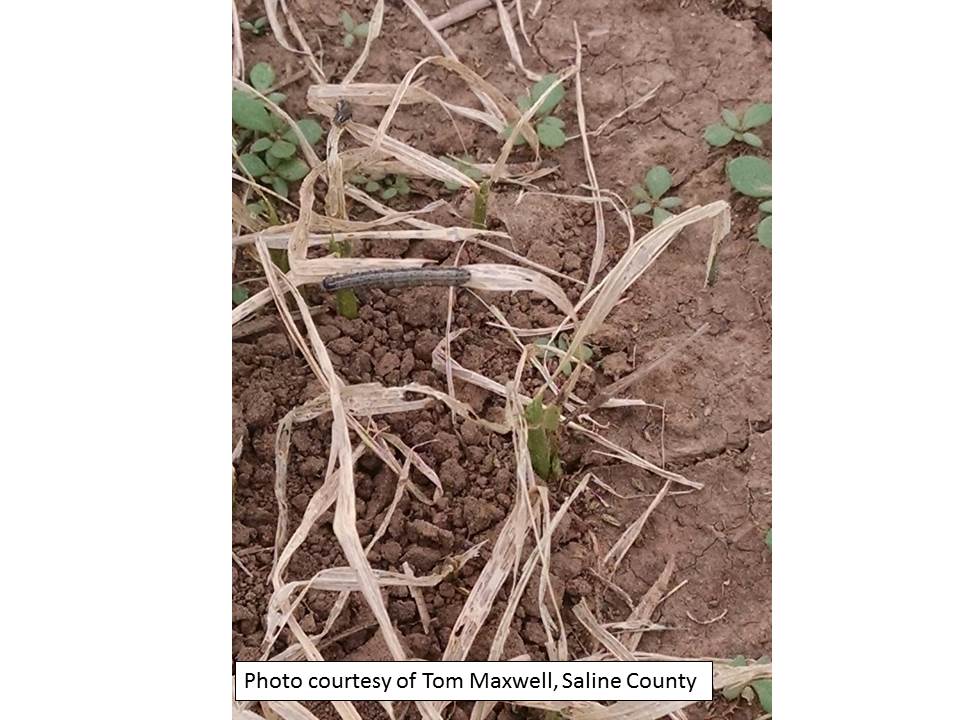by–Dr. Raymond Cloyd
This is the time of year when euonymus scale (Unaspis euonymi) becomes noticeable in landscapes on evergreen euonymus (Euonymus japonica) and Japanese pachysandra (Pachysandra terminalis). Euonymus scale typically overwinters as a mated female, primarily on plant stems. Eggs develop and mature underneath the scale, and then hatch over a two to three week period. The newly hatched crawlers migrate along the stem and start feeding near the base of host plants. Crawlers can also infect adjacent plants by being blown around on air currents, resulting in infestations often not being detected until populations are extensive and damage is noticeable—like right now. Leaves eventually become spotted with yellow or white areas. Plants located near structures such as foundations (Figure 1), walls or in parking areas are more susceptible to euonymus scale than plants growing in open areas that receive sunlight and air movement. In addition, the variegated forms of euonymus are more susceptible to euonymus scale than the green forms.
Figure 1: Euonymus Plants Near Foundation infested with Euonymus Scale.
Heavy infestations of euonymus scale can ruin the aesthetic appearance of plants, causing complete defoliation or even plant death. Females are dark brown, flattened, and resemble an oyster shell. Males, however, are elongated, ridged, and white in color (Figure 2). Males tend to be located on leaves along leaf veins whereas females reside on the stems. There may be up to three generations per year.
Figure 2: Close up of Euonymus Scale Females and Males.
Cultural practices such as pruning out heavily infested branches—without ruining the aesthetic quality of the plant—is extremely effective in quickly reducing euonymus scale populations; especially this time of year. Be sure to immediately discard pruned branches away from the area. If feasible, avoid planting Euonymus japonica in landscapes since this species is highly susceptible to euonymus scale. Winged euonymus (Euonymus alata) is less susceptible to euonymus scale, even when adjacent plants are infested. Applications of insecticides in May through June, which is when the crawlers are most active, will help to alleviate problems with euonymus scale later in the season. Insecticides recommended for suppression of euonymus scale populations, primarily targeting the crawlers, include acephate (Orthene); pyrethroid-based insecticides such as bifenthrin (Talstar), cyfluthrin (Tempo), and lambda-cyhalothrin (Scimitar); potassium salts of fatty acids (insecticidal soap); and horticultural (petroleum or mineral-based) and neem (clarified hydrophobic extract of neem oil) oils. Always regularly check plants for the presence of crawlers, which will help time insecticide applications. In general, three to four applications performed at seven to 10-day intervals may be required; however, this is dependent on the level of the infestation. Euonymus scale is a hard or armored scale, so, in most cases, soil or drench applications of systemic insecticides such as imidacloprid (Merit) are not effective in suppressing euonymus scale populations; however, the systemic insecticide dinotefuran (Safari), due to its high-water solubility (39,000 ppm), may provide suppression of euonymus scale populations when applied as a drench to the soil. Dormant oil applications can be conducted in winter to kill the overwintering mated females on stems. However, thorough coverage of all plant parts is important in order to obtain sufficient mortality.
Euonymus scale is susceptible to a variety of natural enemies (e.g. parasitoids and predators). These include braconid and ichneumonid wasps, ladybird beetles, green lacewings, and minute pirate bugs. However, natural enemies may fail to provide enough mortality (‘killing power’) to significantly impact “high” populations of euonymus scale. Furthermore, insecticides such as acephate (Orthene), and many of the pyrethroid-based insecticides, including bifenthrin (Talstar), cyfluthrin (Tempo), and lambda-cyhalothrin (Scimitar) are very harmful to most natural enemies, so applications of these materials may disrupt any natural regulation or suppression.












